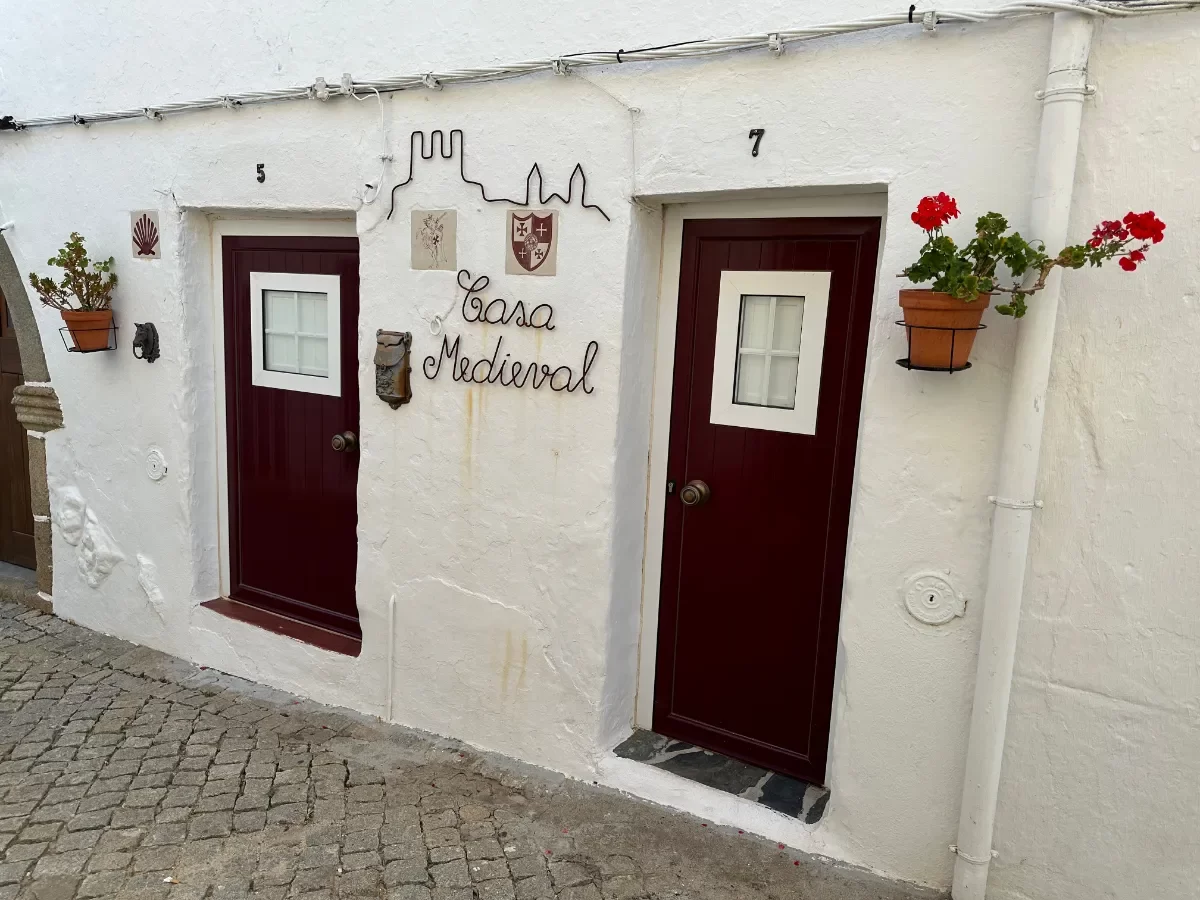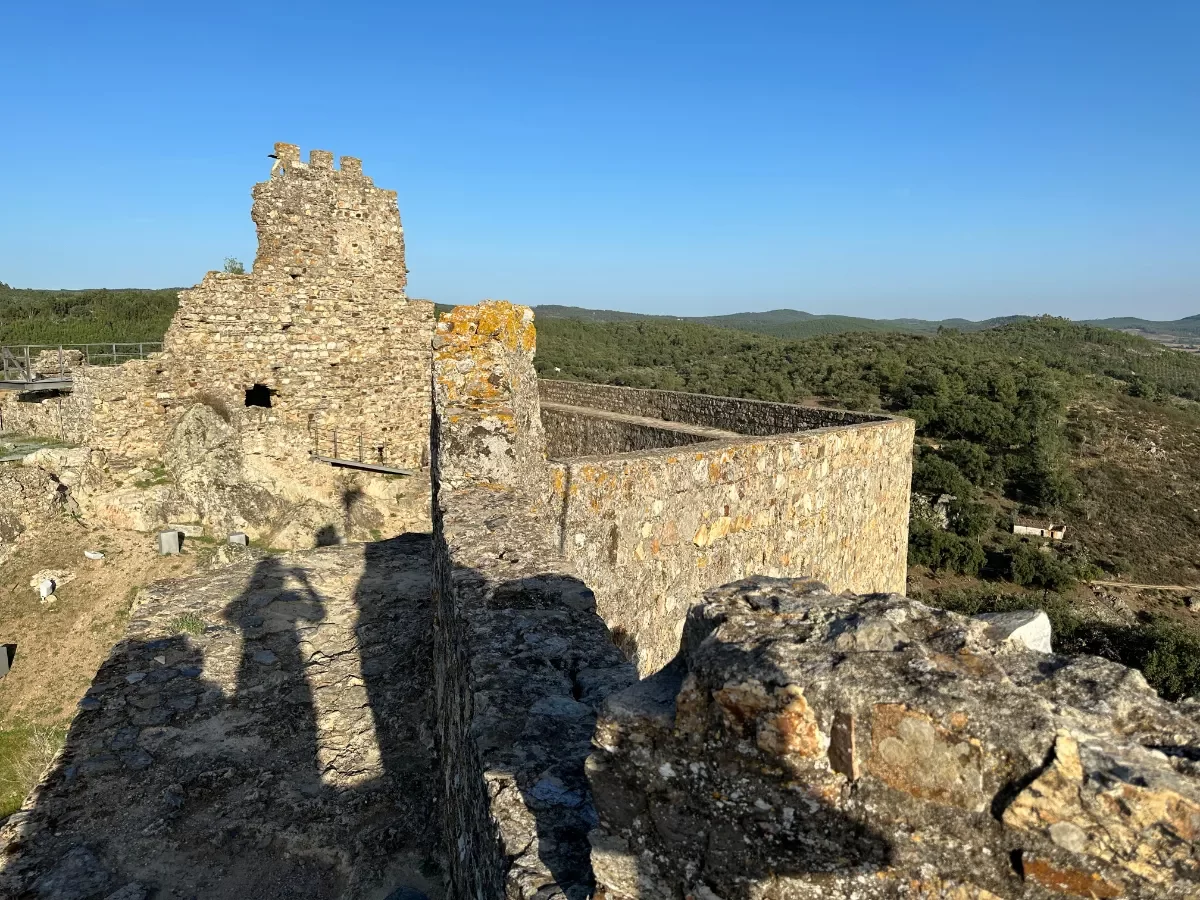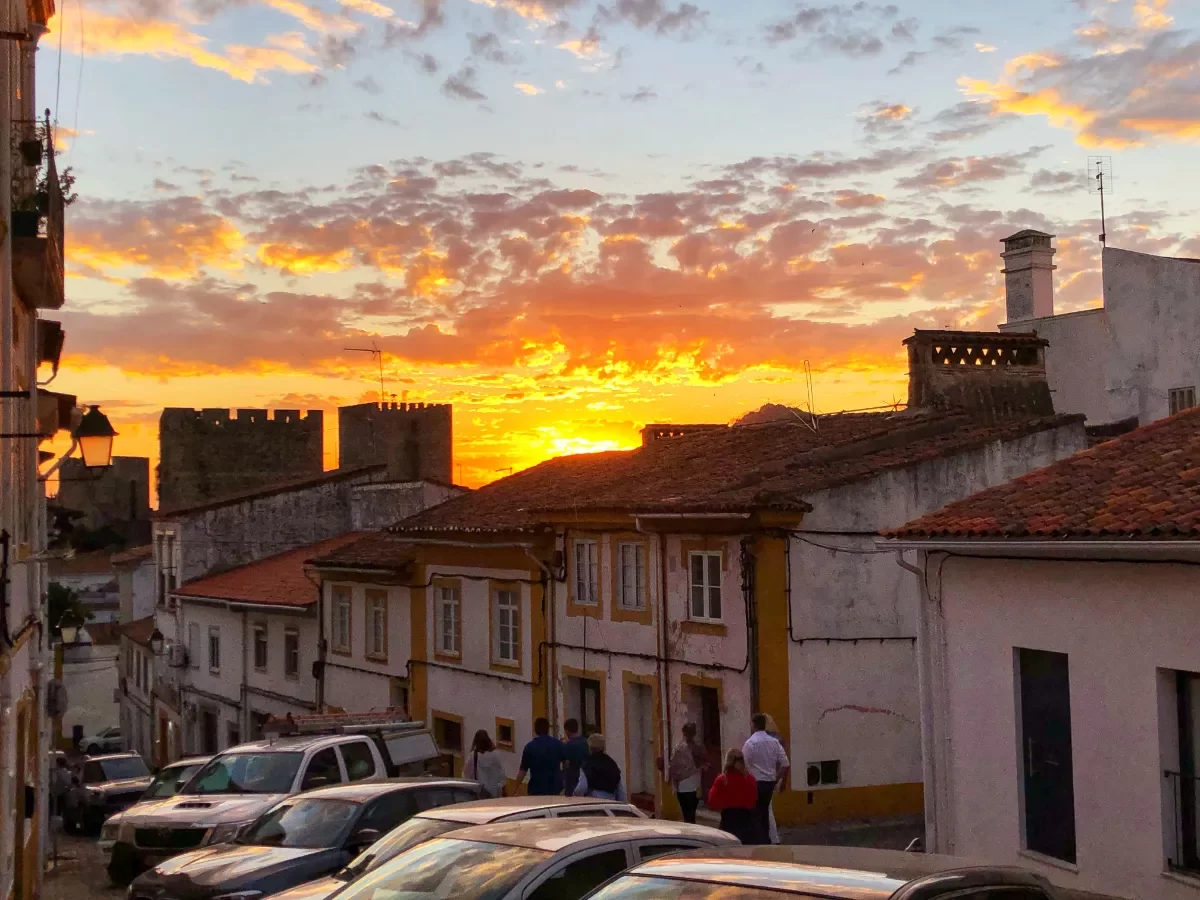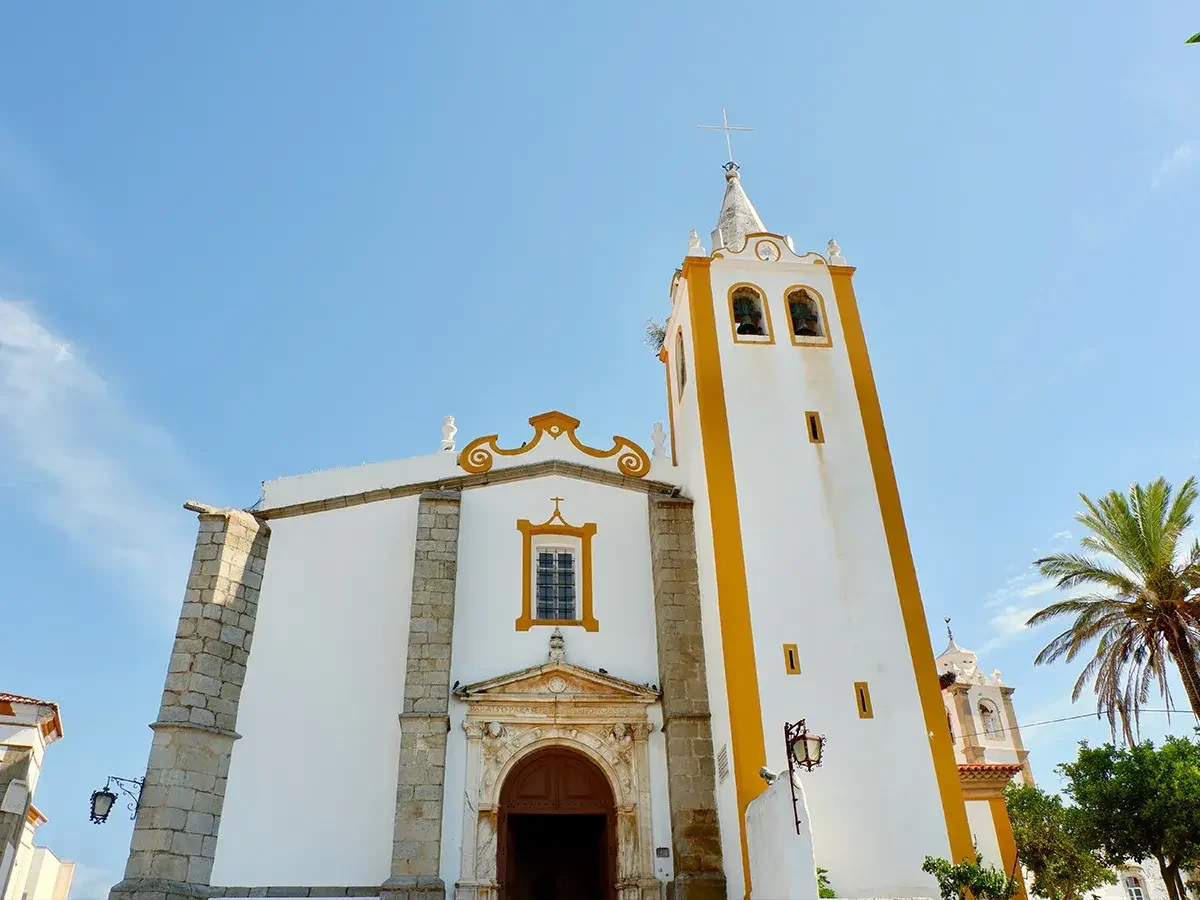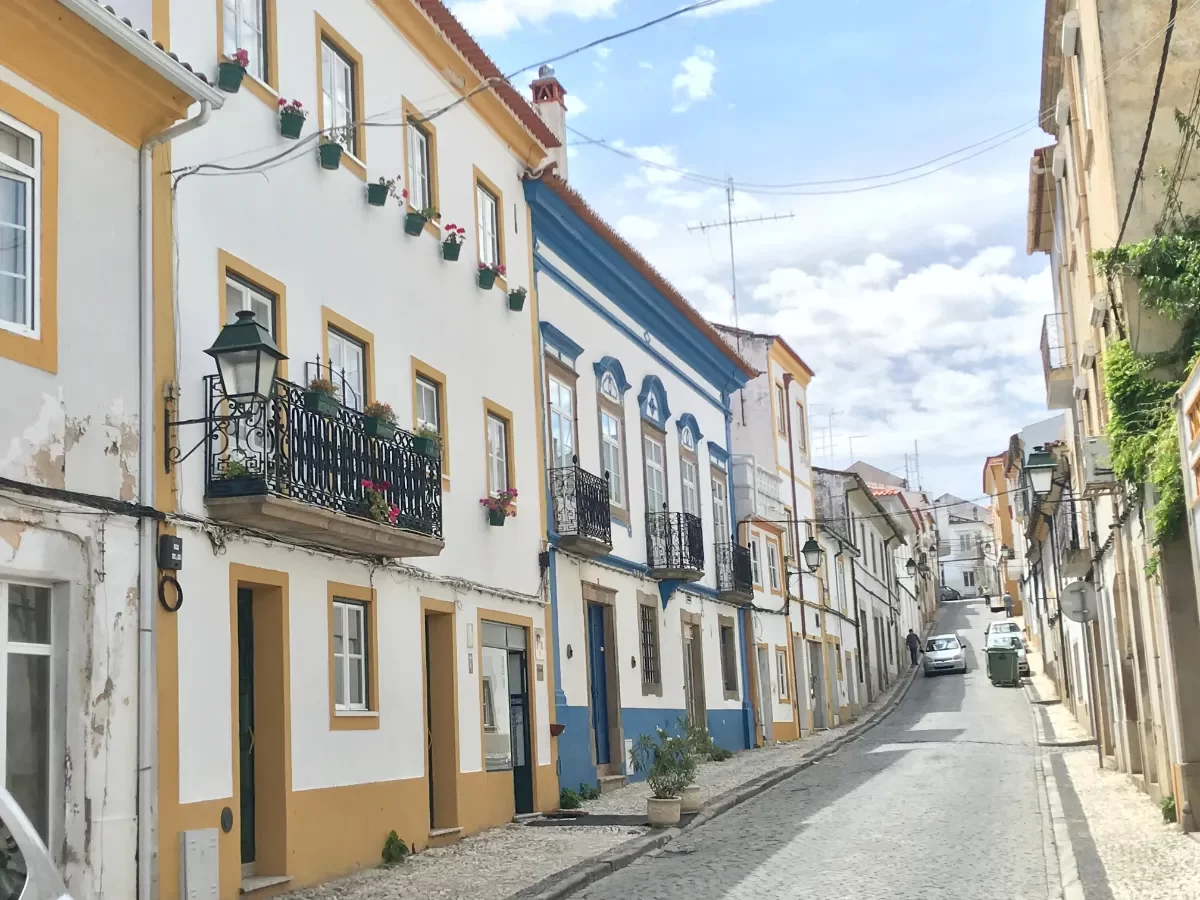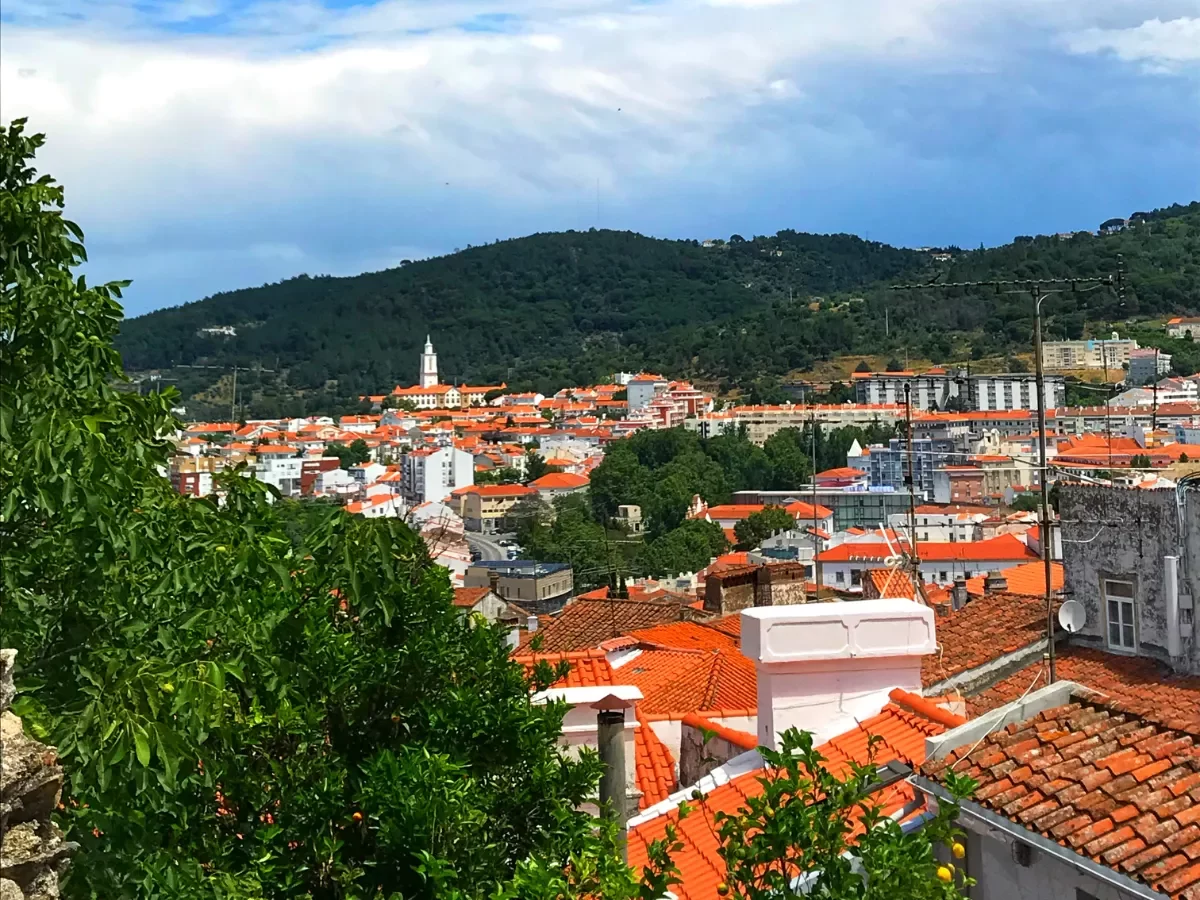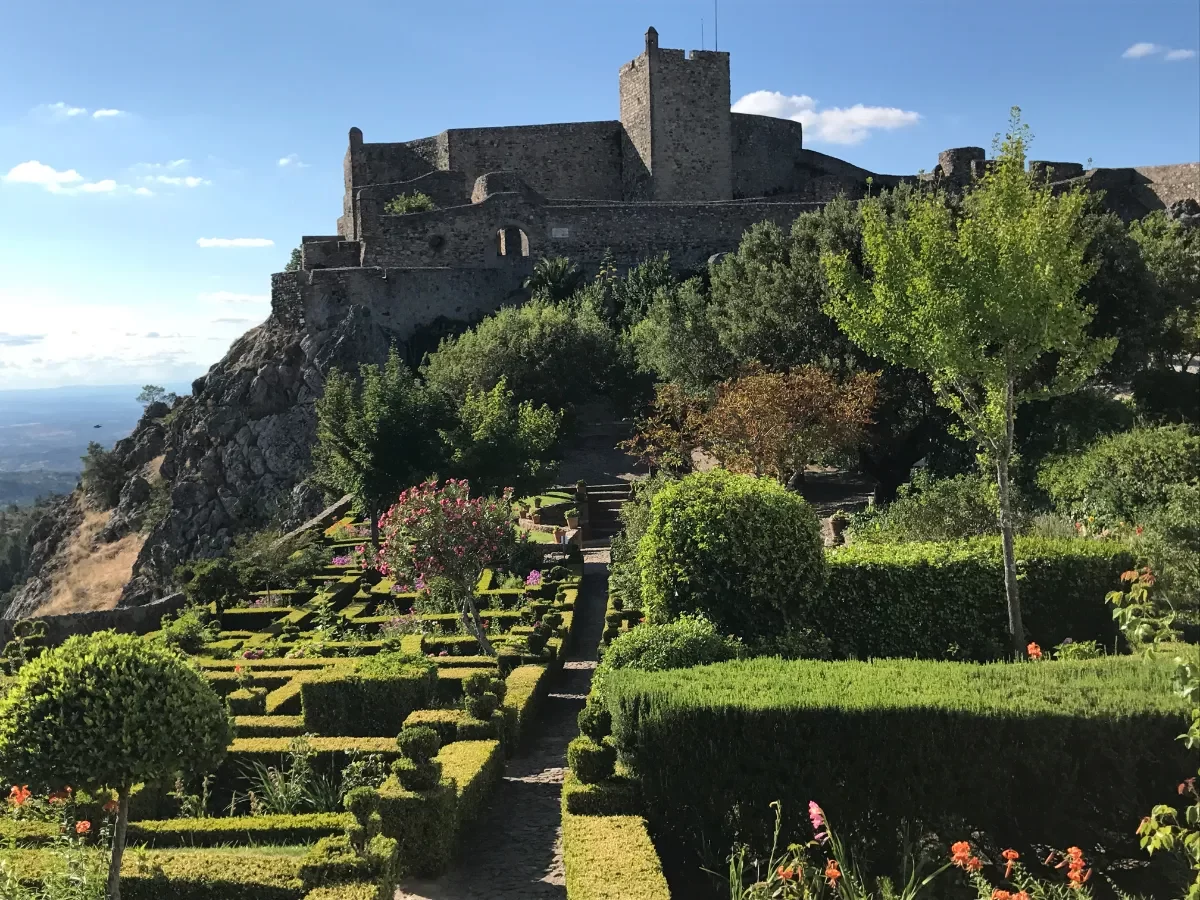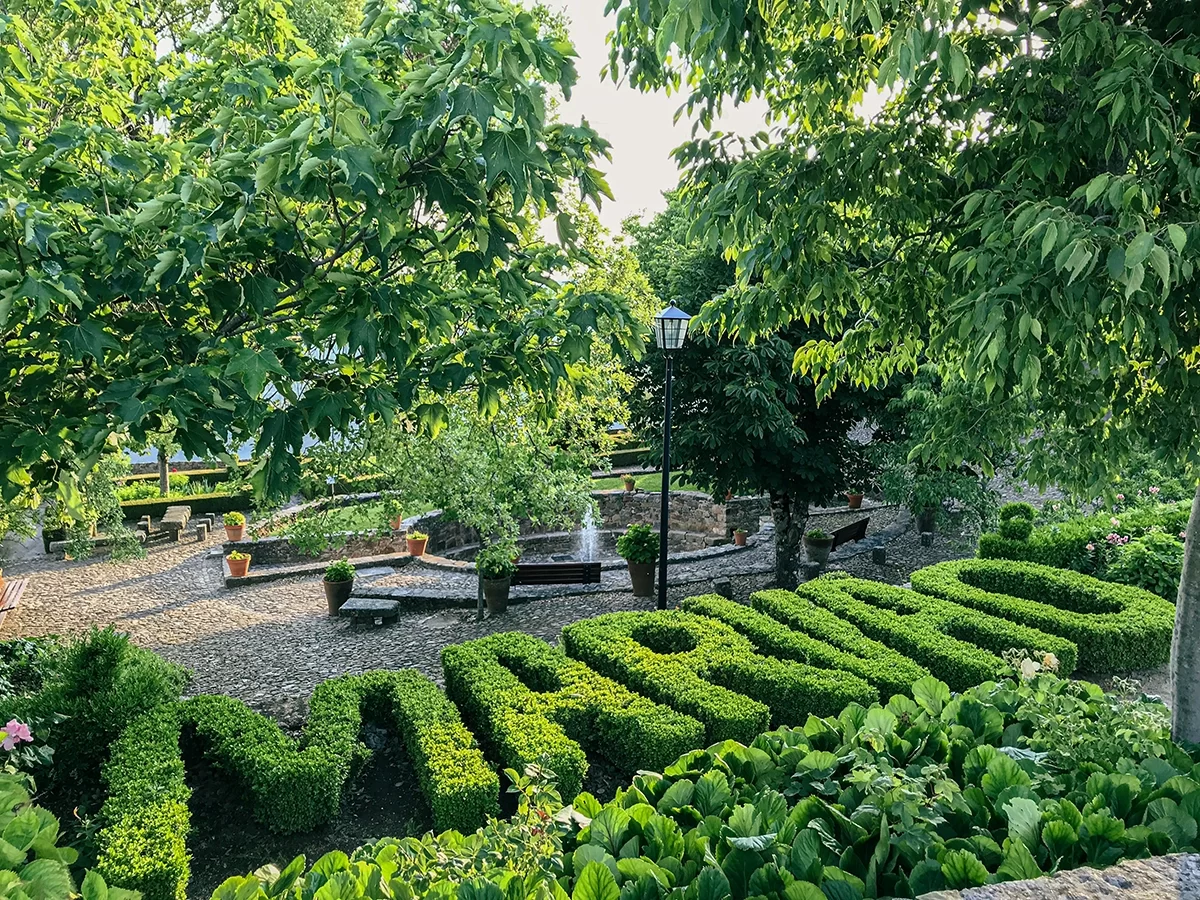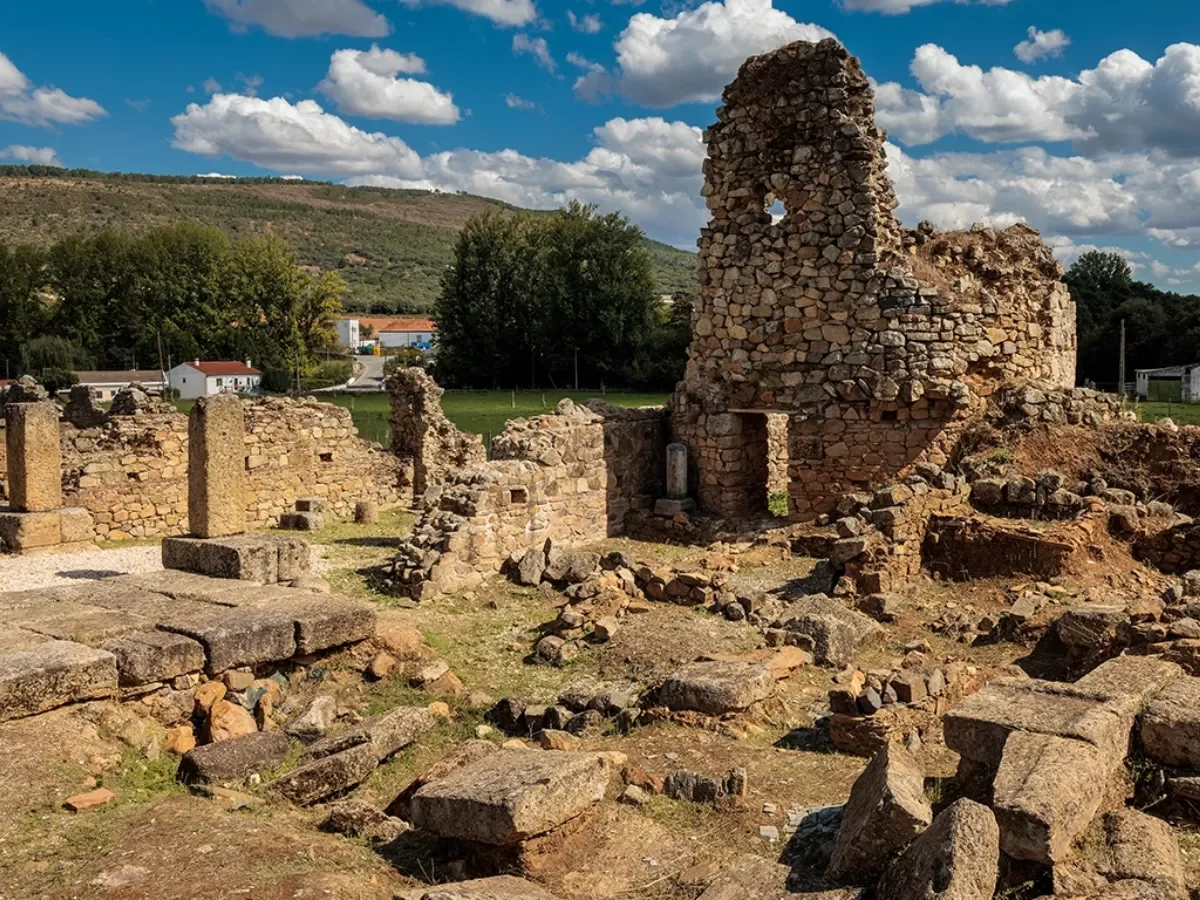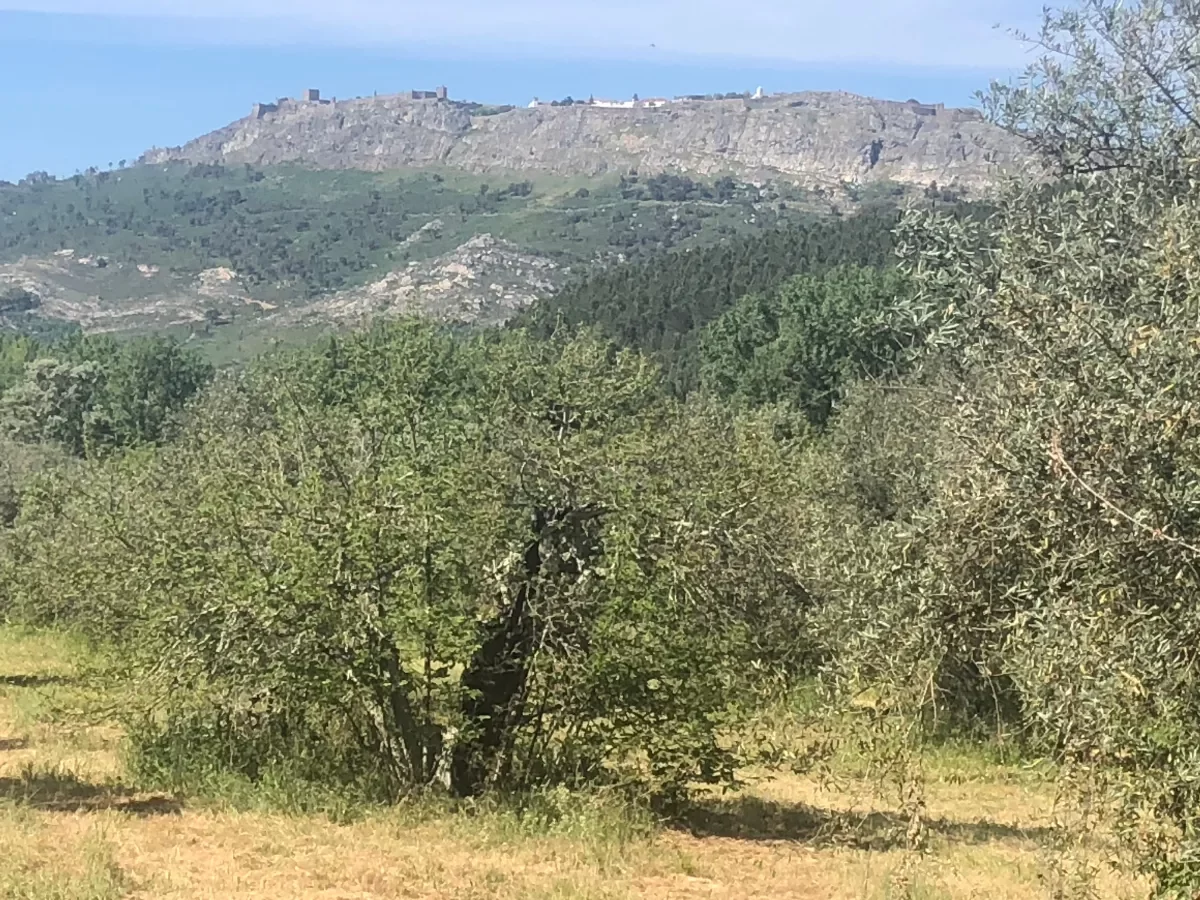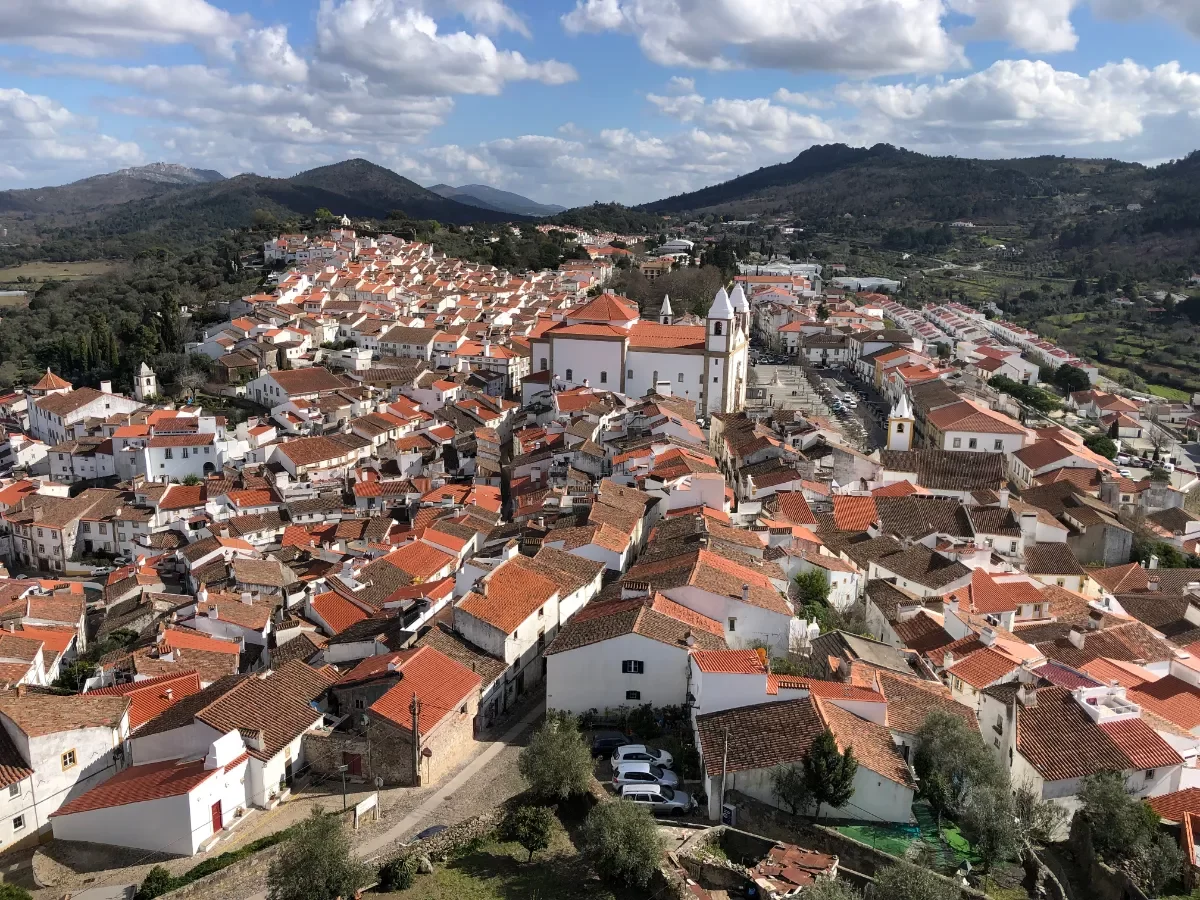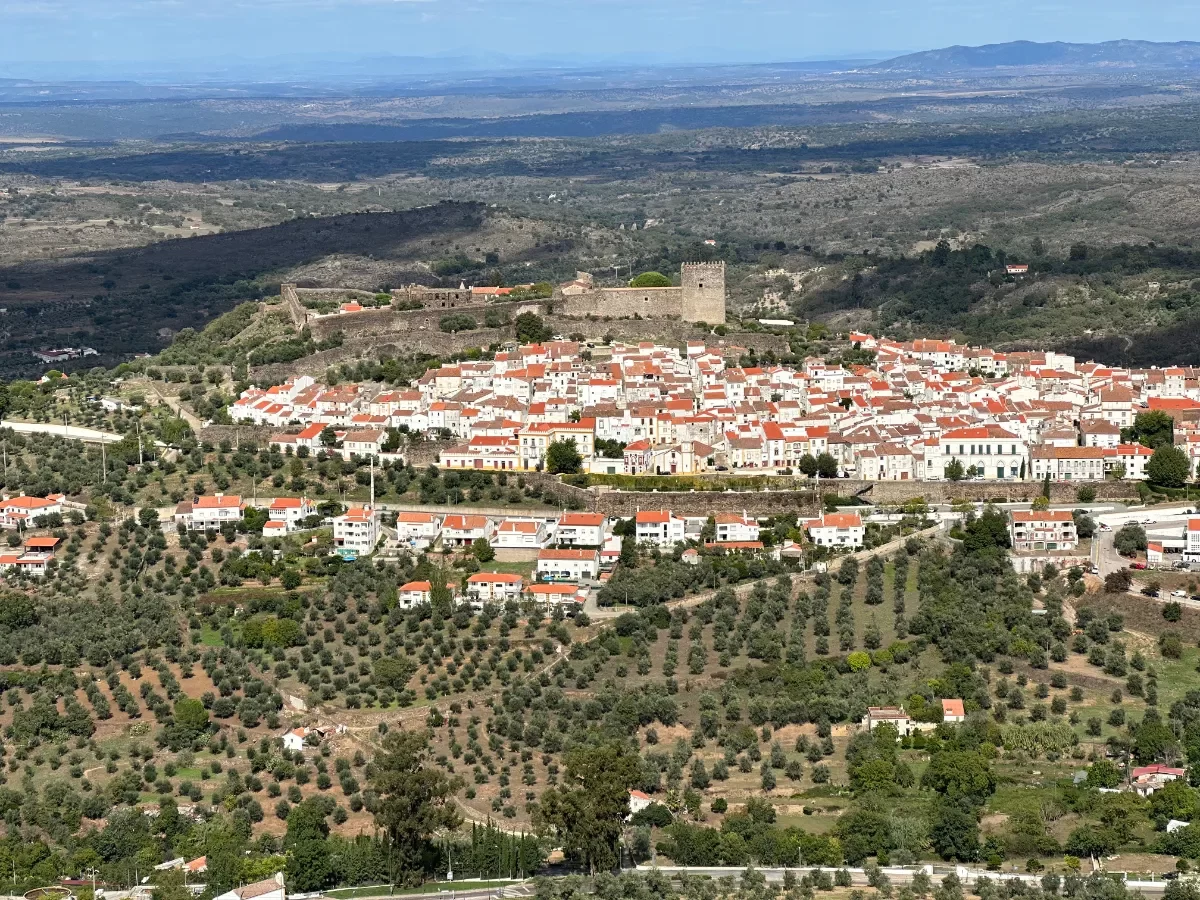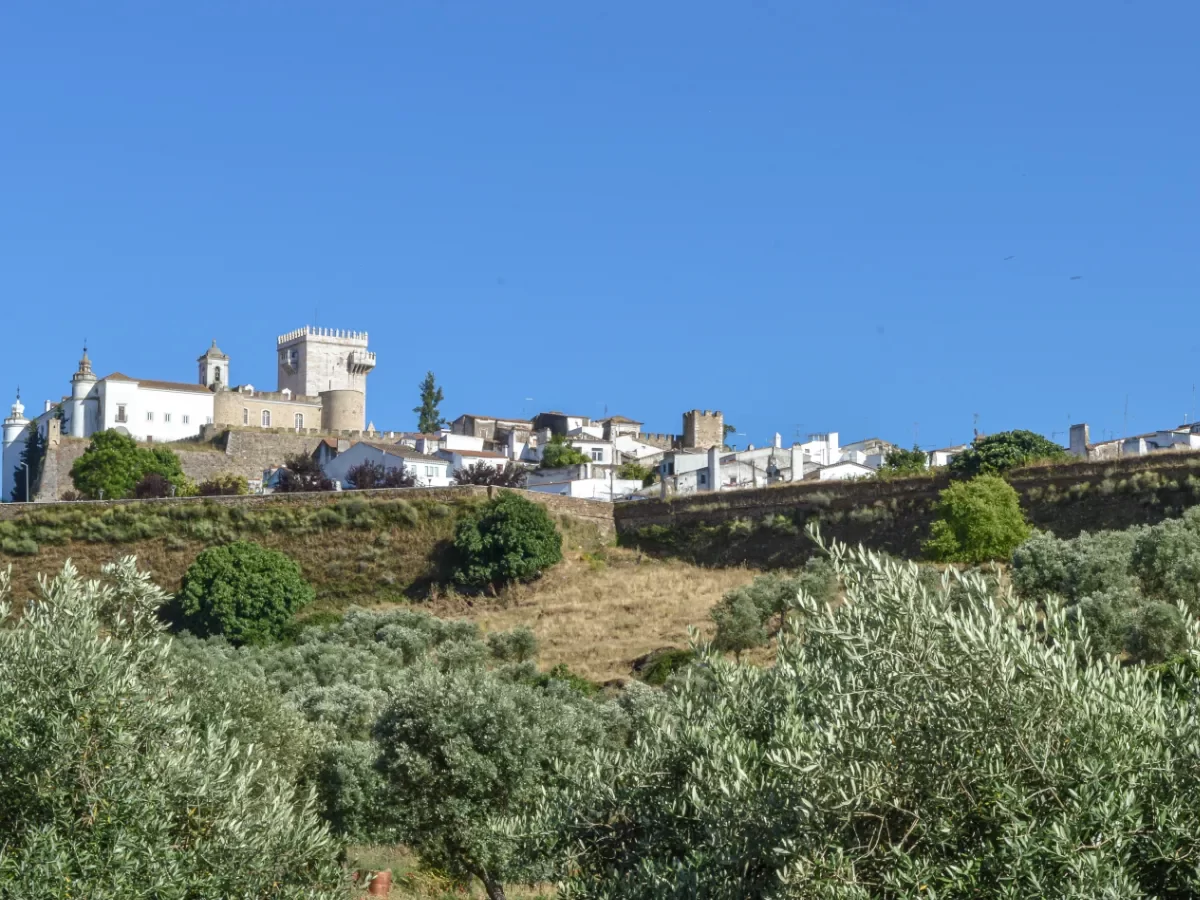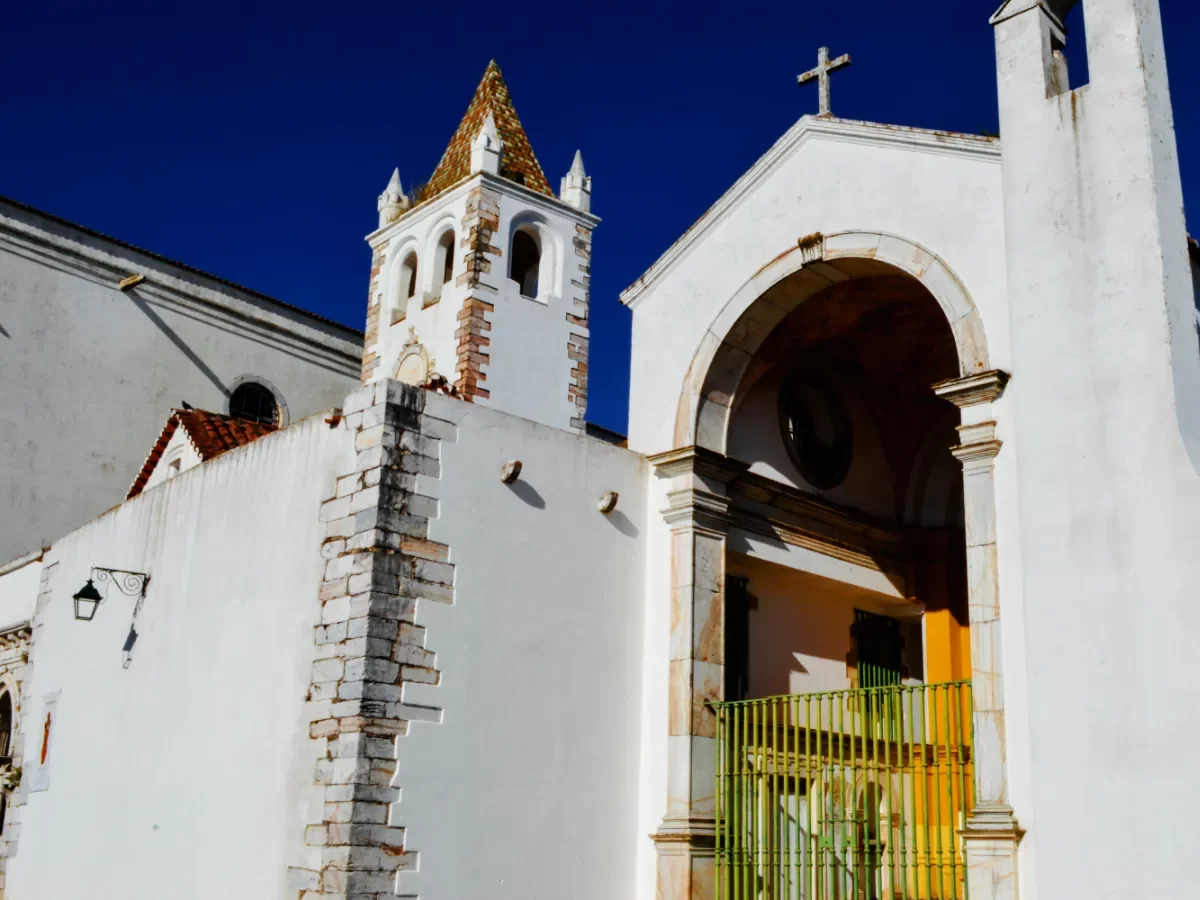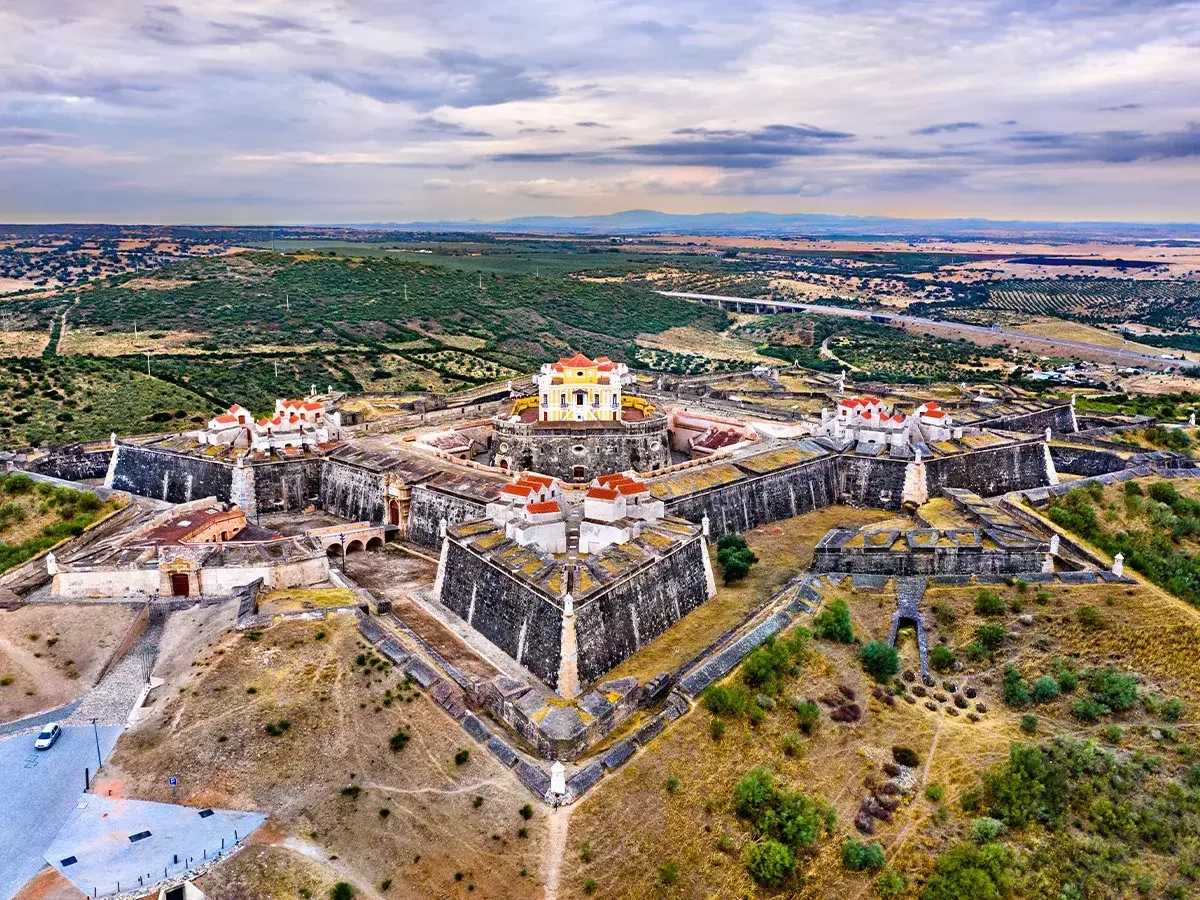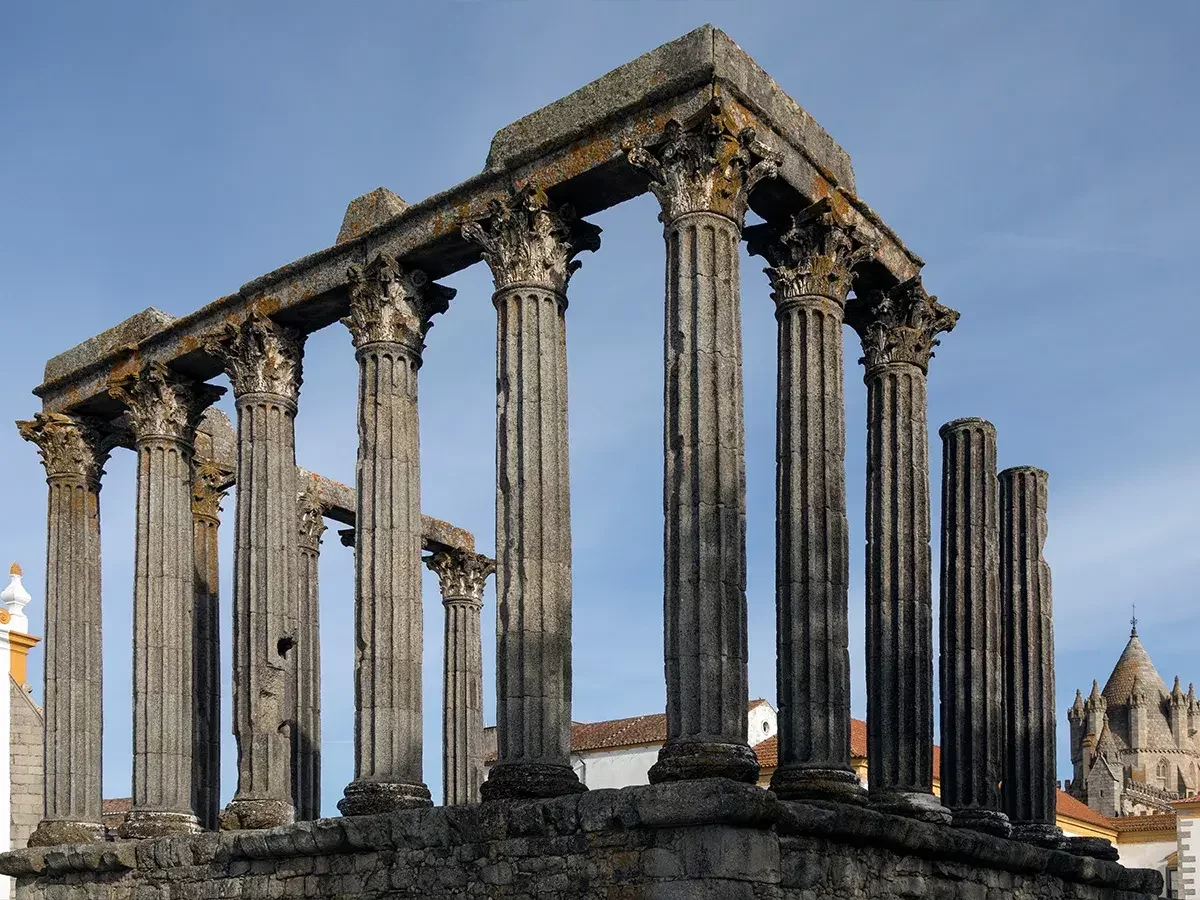A cultural melting pot
The pretty hilltop village of Alegrete is visible from Tapada do Falcão. The castle dates from the 14th century and you can visit the medieval battlements, ramparts and tower, and Gothic doorways.
Try to find Tapada do Falcão from the binoculars! The village itself is a network of steep narrow streets and quaint, traditional houses with distinctive arched doorways.
The bustling town of Portalegre enjoyed great prosperity in the 15-17th centuries, when tapestry and silk production financed the building of the town’s many fine (now frequently faded) baroque mansions.
Today the town is still famous for its tapestry production, where works of art are reproduced as hung tapestries using a painstaking and completely manual process.
Be sure to visit the modern and fascinating tapestry museum located in the old part of the town. Market days are Wednesday and Saturday – visit the larger stalls to buy fresh fish and local bread, cheese, fruit and vegetables, or visit one of the many charming table-top stands where smallholders sell their home grown produce. You will also find an excellent butcher’s shop here.
Marvão is a spectacular walled village perched 1000 metres above the plain, on a mountain top with sheer precipice all around. Its narrow cobbled streets are lined with whitewashed houses and lead to one of the best preserved castles in Portugal dating from the 13th century.
The far reaching views from the castle in every direction are simply spectacular, so visit on a clear day.
There are two major events in the Marvão calendar. If you are there in November you must visit the Chestnut Fair when for one extraordinary weekend the quiet streets come alive with crowds celebrating, imbibing and singing! And in July a wonderful classical musical festival takes place in the castle – and beyond.
The attractive spa town of Castelo de Vide was a border defense post for centuries, as its old walled town and castle suggest. A scramble to the top of the castle is well worth it for the views of the town’s pretty, flower-decked streets below.
From there explore the old Jewish Quarter (Judiaria) which houses the oldest synagogue in Portugal, dating from the 13th century. Just outside Castelo de Vide megalithic remains can be seen at the Coureleiros megalithic park and near the village of Povoa e Meadas, where the Menhir of Meada, at over 7 metres tall, is reputed to be the tallest single standing stone in the Iberian Peninsula.
Estremoz is another charming walled town known for its marble. There is a large weekly market on Saturday mornings which is well worth a visit and you will find an amazing selection of fresh produce and plants, and an eclectic assortment of antiques and bric-a-brac.
The recently opened Berardo Museum, housed in the beautiful 18th century Tocha Palace in the centre of town, exhibits a wonderful collection of ceramic tiles (azulejos) from the last 800 years.
The town’s roots can be traced back to the Celts and Goths. It was under Moorish occupation for 500 years from 714 and repeatedly resisted attacks from Spain in the 16th and 17th centuries and from Napoleon’s army in 1808.
Wellington used Elvas as his general headquarters during the Peninsular War and the British military cemetery is in one of the castle bastions with views over the battlefields of Badajoz and Albuera. A number of Wellington’s senior officers who fell in these battles are buried here.
Just outside the town, perched high on a hilltop, is the striking fort of Nossa Senhora da Graça which was restored in 2015 and is definitely worth a visit.
A little further afield but definitely worth a visit is the city of Évora, another UNESCO World Heritage Site and former capital of Portugal. Included in sites to see are the Roman Temple of Diana, the ancient University, the Old and New Castles, the Cathedral, the Regional Museum and various churches, including the gruesome Chapel of Bones in the São Francisco Church.
There are numerous squares in which to sit and good restaurants and shops abound. To the west of Évora is the Cromeleque dos Almendres, Portugal’s ‘Stonehenge’ and one of Europe’s oldest and largest prehistoric monuments.

